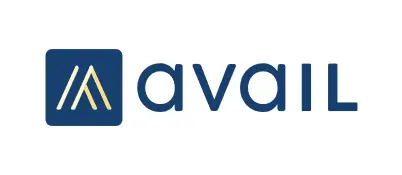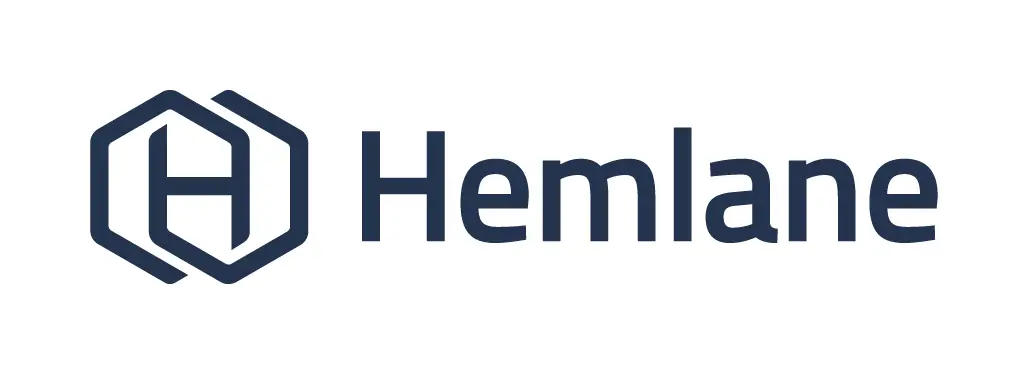As more and more financial transactions are performed virtually, landlords are moving away from paper checks and towards collecting rent electronically. Some use peer-to-peer apps to pay rent, such as Zelle, PayPal, or Venmo. However, many have questions about whether these services are the best choice.
While payment apps are convenient to use, there are some drawbacks as well. To that end we’ll outline the strengths and weaknesses of using each of the common payment apps to pay rent. We also discuss online rent collection alternatives that independent landlords can use.
 Also Read: The Best Online Rent Payment Service for Small Landlords
Also Read: The Best Online Rent Payment Service for Small Landlords
Should I Let Tenants Pay Rent with Venmo?
Venmo is a mobile payment service owned by PayPal, with particular focus on person to person transfers. In short, it allows users to send money to others via a mobile app. You can transfer money from your bank account, as well as your debit card, credit card, or Venmo balance. The money you receive is then added to your Venmo balance. You can either keep it there or transfer it to your bank account.
Pros of Using the Venmo App to Pay Rent
-
Quick to start – Venmo is easy to use. Once you download it, you can start sending or receiving payments in minutes.
-
Expense splitting – Venmo also allows you to split between multiple people, sending or requesting the same amount from all of them simultaneously. It offers an on-screen calculator when you send or request payment, which makes calculations easier.
-
Free funds transfer – Transferring money from your Venmo balance to your bank account or linked debit card is free. It usually takes around three business days.
-
Debit and credit cards – Venmo offers debit and credit cards that don’t charge any annual fee. It also has cash-back offers with some retail stores. The rewards received are added to your Venmo balance.
-
Social elements – The app includes popular features from social media such as comments, likes, and messages attached to every payment. This makes money transfers more interesting and helps with communication between the parties.
Cons of Using the Venmo App to Pay Rent
-
Fees for business transactions – While it’s free to transfer money person-to-person using Venmo, rent payments are likely to be categorized as a business transaction, with fees of 1.9% + $0.10.
-
Fees for “Cash a Check” feature: Depositing a check directly to your Venmo account will cost 1%, with a minimum charge of $5.
-
Fees for instant payments – For faster payments, Venmo offers instant transfers for a 1.5% fee, with a maximum charge of $15.
-
No direct bank deposits – All funds go to your Venmo account instead of straight to your bank.
-
Limited property management features – You can’t set up recurring, automatic payments, or late fees. Moreover, you can’t stop or decline a payment if your tenants uses one of the Venmo apps to pay rent. Landlords can’t block partial payments. Many cities halt the eviction process once a landlord accepts any payment, preventing any efforts to remove a tenant for nonpayment.
-
No protection for landlords –If the payment is sent to the wrong person due to incorrect contact information, Venmo won’t refund the money to the renter or transfer it to the landlord.
-
Privacy – All payments are public by default, which means any Venmo user can see them.
-
No cancellation policy – Once you make a payment in Venmo, there’s no way to cancel. The receiver gets the money instantly.
-
No international payments – Venmo doesn’t support international payments.
 Also Read: Reporting and Accounting Tools: Best Accounting Software for Landlords
Also Read: Reporting and Accounting Tools: Best Accounting Software for Landlords
Should I Let Tenants Pay Rent with Zelle?
Zelle is a mobile peer-to-peer payment app that’s easy to use and transfers funds comparatively quickly. It allows you to send payment directly from one bank account to another. It’s a particularly good way to send payment to somebody you already know.
Pros of Using Zelle
-
Free to send funds person-to-person – Zelle payment app is free to download and use. It doesn’t charge you to send or receive payments.
-
Security – Zelle doesn’t store your personal data. Your information remains secure with your bank and is never visible to Zelle. You don’t even need to have the receiver’s banking info to send payment. You only need their phone number or email address. Zelle will notify the receiver and take care of the rest.
-
No receiving limits – There’s no limit on how much money you can receive through Zelle.
-
Integration with banking apps – Zelle is already integrated with many banking apps. This means money goes quickly from the sender’s account to the receiver’s.
Cons of Using Zelle
-
Confusing rates and rules: Zelle leaves much up to individual financial institutions, including transfer limits, fees, and which business transactions (if any) are allowed.
-
No fund transfer from a credit or debit card – The platform only supports bank transfers. Therefore, your tenants can’t use a debit or credit card to pay rent with Zelle.
-
No cancellation policy – You can only cancel Zelle payment if the receiver hasn’t activated their own account yet.
-
Supports US banks only – Zelle only supports US bank accounts.
-
Send limits – Zelle limits the amount of money that you can send, which varies by bank. If your tenant’s bank doesn’t yet offer Zelle, their weekly send limit is $500.
-
No option to decline/block payments – You can’t deny an incoming payment through Zelle, which can cause problems if you are trying to evict a renter and they make a partial payment.
-
Limited property management features – There’s no option to set up recurring payments or late fees with Zelle, there are no reminders, or any means to pro-rate or divide rent between multiple tenants. Zelle also does not offer any bookkeeping or financial tracking features.
-
Only one bank account may be linked to a user-ID – You can use Zelle with multiple bank accounts at different banks. However, this is only possible if you link a different email address or US mobile number to each account.
-
Limitations on commercial use – According to their rules, “In order to use Zelle with your business account, your bank or credit union must currently offer Zelle for your business account type.” Zelle leaves a lot up to the banking institutions, so rules will vary.
 Also Read: The Best Free Property Management Software for Small Landlords in 2021
Also Read: The Best Free Property Management Software for Small Landlords in 2021
Landlord-Specific Rent Collection
Whereas we’ve written many posts on full-featured property management software, some of our readers really only want a tool for collecting rent. Our partners at PayRent have created a tool focused on specifically on that need.
Should I Let Tenants use PayPal to Pay Rent?
In contrast to other peer-to-peer systems, PayPal allows you to send and receive payments both locally and internationally. In order to start receiving payments, all you need to do is set up a PayPal account, which is free and only requires an email address and some basic details.
Pros of Using PayPal
-
User-friendly and secure – PayPal is easy to use and offers strong security and fraud prevention. Moreover, it encrypts your bank or credit card info, keeping it safe.
-
Multiple payment methods – Your tenants can use PayPal to pay rent with a credit card, a bank account, a debit card, or a PayPal balance.
-
Business accounts – With a PayPal business account, you can keep track of your invoices easily, as well as take advantage of PayPal’s payment protection plans.
-
No send limits – There are few limits to the amount of money you can send if you have a verified PayPal account. According to PayPal you can send up to $60,000 in one transaction, though confusingly they also state that this number may be limited to $10,000. Also bear in mind that your funds go into your PayPal account, not directly into your bank account.
Cons of Using PayPal
-
Limited features for landlords – With PayPal, you can’t set reminders, apply and enforce late fees automatically or even block partial payments. This makes potential eviction proceedings challenging.
-
Officially collecting rent is a business transaction – Although PayPal is free to send money to friends and family, it charges 2.9% of the transaction amount, plus $0.49, when sending business payments. By PayPal’s definition rent falls under “goods and services”, which strictly qualifies as a commercial transaction.
-
Fee for instant transfers – PayPal also charges a 1% fee if you want instant access to your money. A free bank transfer can take several days.
-
Inadequate protection for landlords – Renters can dispute transactions through PayPal. When payment issues arise however, PayPal will often support the payer (the tenant in this case).
-
Rent reminders – PayPal sends reminders when invoices are overdue, however, it doesn’t send rent reminders in advance.
 Also Read: The Best Rental Property Management Software: Product Overviews
Also Read: The Best Rental Property Management Software: Product Overviews
Full-Featured Property Management Software
Increasingly, landlords see the value of choosing one tool to help streamline advertising, screening, rent payments, leasing, accounting, and more. Amongst the many products we’ve written about, our partners at Avail and RentRedi do a great job filling these needs.
Collecting Rent Using Property Management Apps
At this point many landlords and renters think using peer-to-peer apps to pay rent is a cheaper, simpler, and more effective way to receive online rental payments. However, we feel that using a property management software product is the best way to collect rent. To illustrate, here are the primary advantages we see in using property management software to manage rentals:
-
Designed for rental management – As far as rent goes, property management software products help landlords charge and track security deposits, prorated rent, late or utility fees, and automatically send reminders.
-
Additional Features = Efficiency – Property management tools bring advertising, applications, screening, leasing, and rent collection all onto one platform. Many also facilitate bookkeeping and maintenance coordination features.
-
Recordkeeping – These tools track all rent payments automatically and make them visible to tenants, which ensures transparency and alleviates the need to send receipts. Many services also let landlords enter expenses and some interface with popular accounting software products.
-
Multiple banks – Most property management software products allow rents for different properties to go to the landlord’s preferred bank accounts.
-
Payment flexibility – Landlords can easily block or decline payments, divide payments between tenants, prorate rent amounts, set up recurring payments, and set and enforce late fees.
-
Low cost – Most property management tools don’t charge fees to collect rent.
-
Automated – These tools enable automatic payments, reminders for both landlords and tenants, alerts, and automatic assessment of late fees.
 Also Read: Hemlane Overview: Next-Gen Property Management
Also Read: Hemlane Overview: Next-Gen Property Management
Hybrid or Flat-Fee Property Management
In recent years new services have been cropping up to occupy the space between self-management and hiring a traditional property manager. At this point, landlords have choices about which roles they want to keep and which they want to out-source. Our partners at Hemlane and Marble , for example, have created tools that give landlords great flexibility in managing their properties..
Landlord Gurus Takeaway
Peer-to-peer payment services are convenient and well known, but have limitations and lack many features useful to rental property operations. They are basically intended to be for personal use and landlords may be operating outside of the terms of use if they use these apps to pay rent. We recommend choosing a property management software tool that provides features specifically designed for the needs of rental property owners.
Also Read: Why Landlords Should Use An Online Rent Payment Service
Featured Products for Collecting Rent Electronically
Rental property owners and managers have a wide range of needs, and many will find there are better options than using peer-to-peer payment apps to pay rent. Depending on what your circumstances you’re up against, here are a few services we’d suggest.
A-La-Carte App to PayRent:
- With no subscription plan and a simple pricing structure, PayRent helps property owners and managers collect rent online safely, reliably and automatically.
- Strength: Rent Collection
Full Featured Property Management Software:
- Advertise your property, find and screen tenants, sign leases, collect rent, and e-sign custom local leases, with tools built specifically for DIY landlords.
- Strength: Complete Solution
- RentRedi is an all-inclusive landlord-tenant app. Manage vacancies, screening, and rent collection from wherever you are, on any device.
- Strength: Complete Solution
Hybrid & Flat-Fee Property Management Services:
- Marble presents a happy medium between DIY management and hiring a professional property manager. For a reasonable flat fee Marble fills vacancies, executes leases, coordinates maintenance, and facilitates electronic rent collection.
- Strength: Hybrid Full-Service Mgmt
- Hemlane is a next-gen property management tool that helps property owners manage their rentals. More than simply property management software, Hemlane is a platform that bridges the gap between DIY and full service property management.
- Strength: Hybrid Full-Service Mgmt
Disclosure: Some of the links in this post are affiliate links and Landlord Gurus may earn a commission. Our mission remains to provide valuable resources and information that helps landlords manage their rental properties efficiently and profitably. We link to these companies and their products because of their quality, not because of the commission.
Tagged #collectrent, #rentcollection, landlord accounting software, property management software, Rental property management software
![]() Also Read: The Best Online Rent Payment Service for Small Landlords
Also Read: The Best Online Rent Payment Service for Small Landlords![]() Also Read: Reporting and Accounting Tools: Best Accounting Software for Landlords
Also Read: Reporting and Accounting Tools: Best Accounting Software for Landlords
![]() Also Read: The Best Free Property Management Software for Small Landlords in 2021
Also Read: The Best Free Property Management Software for Small Landlords in 2021![]() Also Read: The Best Rental Property Management Software: Product Overviews
Also Read: The Best Rental Property Management Software: Product Overviews![]() Also Read: Hemlane Overview: Next-Gen Property Management
Also Read: Hemlane Overview: Next-Gen Property Management








